Businesses today are under strain to provide prompt, individualized, and satisfying customer service.
According to Forbes, 48% of customers say they are prepared to pay more for superior customer service. Remarkably, 53% of customers say that a company’s experience is just as important as its goods or services.
Lengthy wait times, excessive consumer inquiries, and exhausted customer support agents have long plagued the customer service sector.
However, conversational AI, such as voice bots, is emerging as the long-awaited solution to enhance positive customer support experiences for many businesses.
TThis blog explores the transformative role of voice bots in CX and walks you through the best voice bot software, key features, use cases, and more. Let’s dive in!
What Is a Voicebot? Why Is It Essential for Customer Experience?
A voice bot is an AI tool that interacts with customers using voice cues, similar to voice assistants like Cortana but focused on specific tasks. It can be integrated into various operations, such as customer service or data entry.
Voice bots use technologies like Machine Learning (ML) for understanding queries, Text-to-Speech (TTS) for converting speech to text, Automatic Speech Recognition (ASR) for identifying users, and Natural Language Processing (NLP) and Understanding (NLU) for contextual responses.
While chatbots are effective for handling written queries, voice bots excel in scenarios where hands-free, real-time communication is key, such as in customer service, sales calls, or data entry tasks.
They function by following these steps:
- Employ automated speech recognition (ASR) to record the user’s speech
- Transcribe speech into text
- Understand the intent of the text
- Generate a response
Unlike chatbots, which use text-based interfaces, voice bots rely on speech recognition and synthesis for user engagement.
However, voice bots aren’t just limited to customer service; they’re presently utilized in several sectors, including finance, sales, retail, travel, and banking.
According to a study, 50% of users favor speech recognition software because it allows them to work hands-free. This preference for hands-free interactions is driving the adoption of voice bots, particularly in environments where convenience and efficiency are paramount.
From small local enterprises to large international corporations, voicebots can readily adjust to the requirements of any size organization. Their capacity to manage a growing number of requests makes them the perfect option for businesses looking to grow without having to scale customer service expenses accordingly.
Benefits of Using Best Voicebot Software for Customer Experience
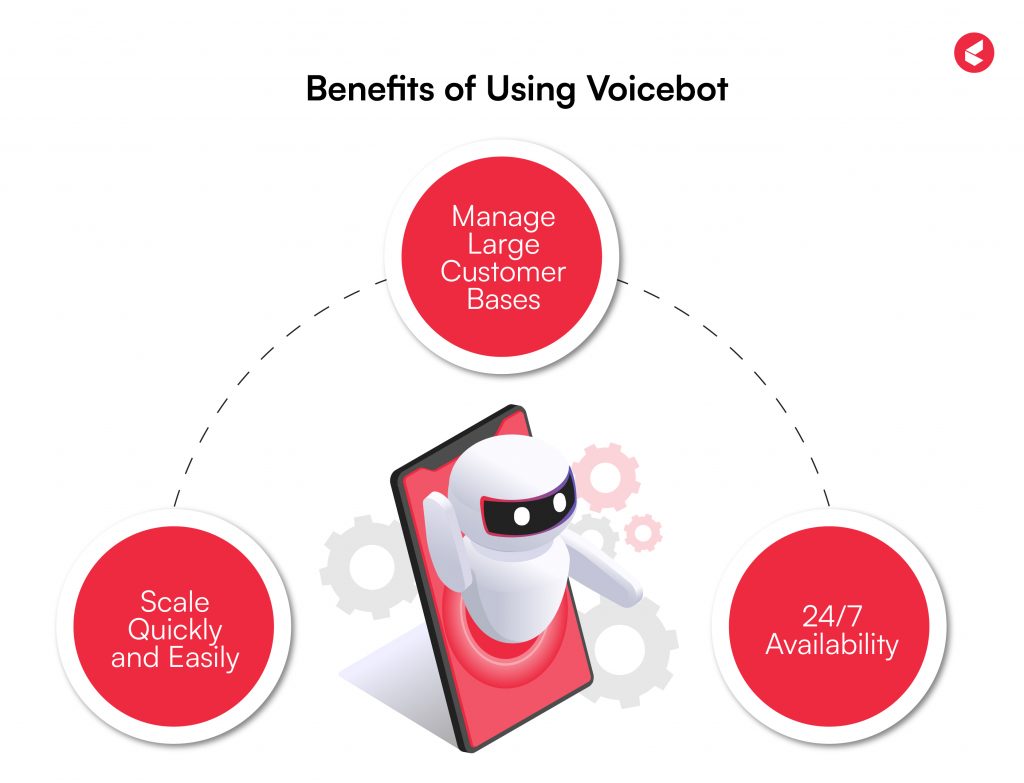
A National Consumer Survey review states the increasing demand for conversational AI in customer service is demonstrated by the fact that over 46% of US consumers are intrigued by employing voice commands to interact with mobile apps.
The preference for voice commands stems from the natural and intuitive way humans communicate, driving the growing adoption of voice bots in customer service. This aligns with the broader trend of AI-driven solutions in the industry, as voice bots leverage artificial intelligence to understand and respond to customer queries efficiently.
Here are the top benefits of using voice bot software for customer experience!
1. Ideal for Dealing with an Extensive Customer Base
Implementing voice bots in customer service can significantly improve efficiency and customer satisfaction. A report by Grand View Research forecasts that the global market for voice-based customer service will reach $5.6 billion by 2028.
It can be tiresome to use human agents to handle a huge customer base. Conversely, Voicebot can effectively oversee contact center functions like:
- Enormous scale commercialization and outbound calling
- Performing assessments
- Inbound calls
- Notifying clients about deals
- Generating reminders
Voice bots are ideal for companies that receive a lot of support inquiries, allowing customers to no longer spend time in call queues.
2. The Capacity to Scale Quickly
Due to their tremendous scalability, voice bots can manage infinite simultaneous consumer engagements. Businesses that are expanding quickly or have seasonal increases in customer queries would especially benefit from this.
In contrast to human agents who can only handle one chat at a moment, voice bots can handle multiple interactions at once without sacrificing response speed or value.
Ride-sharing companies such as Uber and Lyft utilize voice bots to respond to driver and rider support queries regarding lost items or some issue concerning their trip, no matter their location and/or time zone.
3. 24*7 Availability
Voice bots can support your customers anytime without having them wait for your specific business hours to resolve their concerns. This enables human agents to concentrate on more valuable engagements throughout their shifts.
Additionally, voice bots guarantee reliable, round-the-clock support for companies with clients in various time zones, which makes it simpler to cater to a worldwide clientele.
For example, ride-sharing companies like Uber and Lyft rely on voice bots to handle driver and rider support queries, such as lost items or trip issues, at any time, regardless of location or time zone.
Key Features to Look for in Voicebot Solution for CX
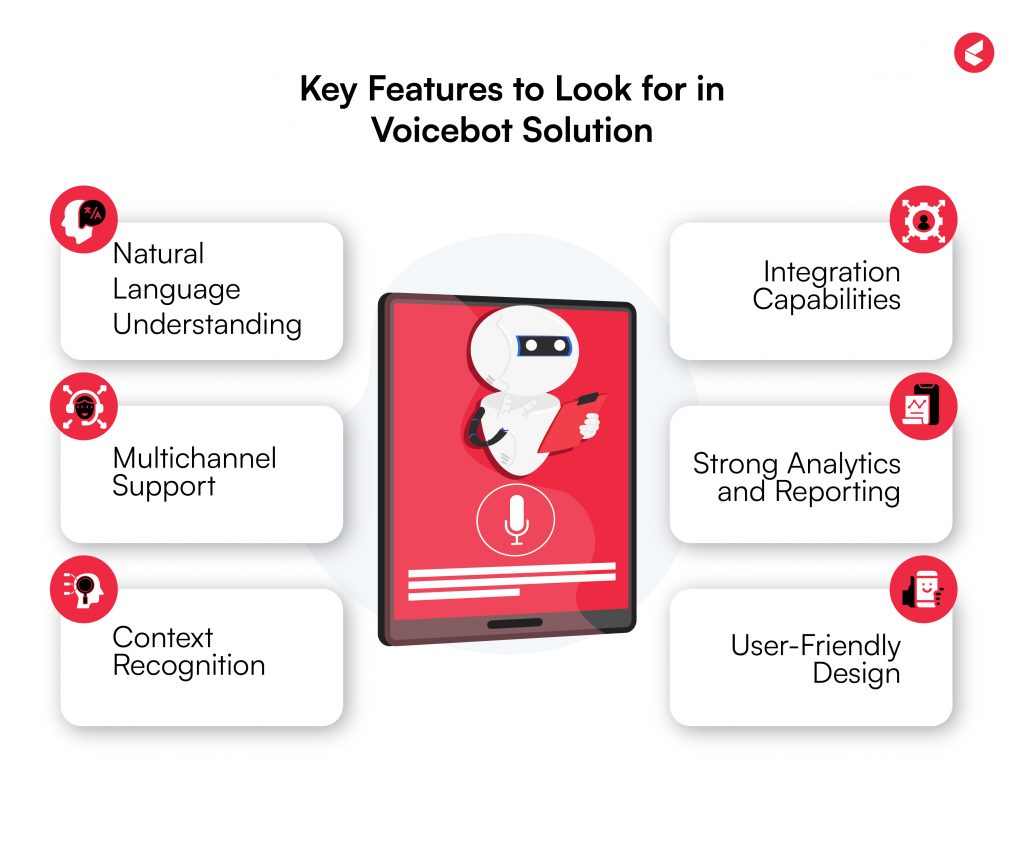
Here is a quick snapshot of the most significant features to consider when deciding on a voice bot solution for your business.
1. Natural Language Understanding (NLU)
A voice bot solution must have a strong NLU capability to grasp consumer inquiries and provide conversational, human-like responses correctly. Look for a system that can understand different accents and languages to ensure a flawless client experience.
Accents and Dialects: Not every customer speaks the same way. A great voicebot adapts to different accents, regional phrases, and even slight mispronunciations.
Context Awareness: Customers rarely phrase things perfectly, and a good NLU system would infer meaning, even from incomplete or slightly vague statements.
Multi-Language Support: If your audience is global, your voicebot should be global in its outreach as well. Opt for solutions that support more than one language without awkward translations.
2. Multichannel Support
Select a voicebot solution that has multichannel support, which enables users to communicate with the voicebot across a variety of channels, including messaging apps, mobile apps, and websites. This guarantees that users can interact with the voice bot via the channels of their choice.
Omnichannel Experience – The customer initiates an inquiry on the website, with a seamless transition over the phone, retaining the context in-between channels.
App & Website Integration – App and Website Integration-Your bot should fit into whatever channel your customers use, including your company app, social media chat portfolio, and through an alternative like Alexa.
Consistent Experience – No one wants to keep explaining the issue. Omnichannel bots keep all your interactions centralized, regardless of the channel in which your chat started
3. Context Recognition
More natural interactions are made possible by sophisticated voice bots that preserve context during a discussion. This feature makes the transaction feel less artificial and more customized to the needs of each particular consumer by assisting the bot in remembering previous conversations.
Remembers Past Interactions – A bot should recall past conversations instead of starting all over again each time in case the customer calls back for an issue still unattended.
Understands Follow-Ups – Humans don’t speak in full sentences all the time. Contextually aware bots won’t miss what a user said, even when jumping from one topic to another.
Personalized Engagement – Context-aware bots can leverage historical data to offer personalized responses, thus making interactions feel far more organic than they would be in traditional transactions.
4. Integration Capabilities
Businesses must choose a voice bot platform that can seamlessly integrate CRM and other customer support platforms. This guarantees that it has access to the client data that is required for individualized interactions and an efficient agent workflow.
CRM & Customer Data Sync – The integration with CRM platforms will allow the bot to access past interactions, purchase history, and user preferences.
Support System Integration – A well-connected voicebot can escalate complex issues to human agents without losing details.
Workflow Automation – A voicebot should handle routine tasks, like order tracking or appointment scheduling, without manual input from your team.
5. Strong Analytics and Reporting
An effective solution gives businesses insights into customer interactions, enabling them to monitor performance indicators and customer sentiment. This information can be used to enhance the voicebot’s functionality and raise customer satisfaction levels.
Conversation Insights – What are customers asking most? Where do they drop off? Analytics provide answers.
Sentiment Analysis – Advanced bots sense customers’ emotions, often involving their frustrations or their unhappiness for necessary intervention.
Real-Time Monitoring – In-line dashboards enable businesses to view bot performance, track accuracy of responses, and modify Nature interactions.
6. User-Friendly Design
Customers are more likely to interact with a well-designed voice bot that is simple to use and comprehend. Businesses must ensure that the voice bot software offers simple customization capabilities to fit their brand’s voice and style.
Simple & Natural Interactions – Customers should be able to engage without memorizing commands or navigating complex menus.
Custom Branding & Personality – Customers should be able to engage without memorizing commands or navigating complex menus.
Easy Customization – Businesses can tweak conversation flows, change responses, and modify functionality without requiring a developer for every change.
Challenges and Considerations When Implementing the Best Voice Bot Software
Organizations must overcome several obstacles while implementing best voicebot software to ensure a successful rollout.
- Integration with Current Systems: There are technological difficulties when integrating voicebot software with current back-end systems. Businesses must make sure the voicebot has access to datasets and APIs.
- User Experience Design: Conversational design must be prioritized because voice interactions are very different from text-based ones. Businesses must consider elements like response timing and error management to ensure that discussions feel natural.
- Privacy and Security: To guard against data breaches, organizations must ensure that privacy laws are followed and that strong security measures are in place.
5 Best Voicebot Software for Customer Experience
Let’s explore the top 5 voice bot solutions, their features, industry-specific use cases, and more:
1. Kapture CX
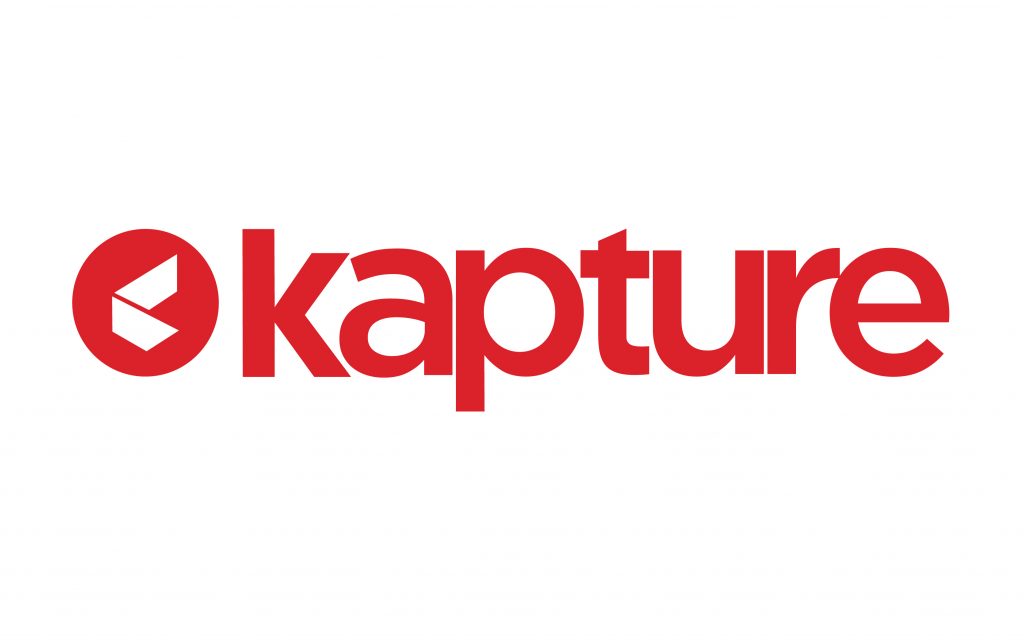
Kapture CX is an AI-powered customer experience platform that helps businesses streamline customer interactions and analyze customer data to improve overall satisfaction. It offers AI-powered voice bots with machine learning (ML) capabilities that cater to a wide range of industries like retail, finance, and more.
Key Features
- Quick Resolution: The voice bot’s extensive industry-specific expertise allows it to effectively answer inquiries unique to multiple fields, such as retail or finance, and comprehend consumer intent.
- Hyper-Personalized Voice Support: Kapture’s Voice Bot uses a multitude of client data, including past interactions, tastes, and purchases, to create individualized interactions. By better addressing particular situations utilizing real-time data, it reduces resolution timeframes and the requirement for human agent involvement.
- Multilingual Support: Machine learning (ML) and natural language processing (NLP) are used regularly to improve comprehension and response formulation, producing speech that sounds realistic in the client’s selected language.
- Seamless Transition: Identifies difficult situations using keywords, expressions, or dialogue structures to transfer calls to agents with ease. Sentiment analysis senses dissatisfaction and, if required, advances the query to your agent.
- Smooth Integration: provides instant and simple access to consumer insights by integrating with the tools that your employees use regularly.
USE CASES AND INDUSTRIES CASES
1. BFSI
In the trading industry, customers often face challenges such as long wait times for assistance and difficulty in monitoring their portfolios effectively.
Kapture Voice Bot addresses these pain points by providing
- Seamless, instant trading support
- Personalized advice
- Timely reminders
For example, the Kapture voice bot can offer real-time updates on market trends and provide personalized investment recommendations based on their portfolio preferences, empowering them to make informed decisions.
2. Retail
Kapture voice bot enhances self-service by providing dynamic FAQs tailored to customer needs and ticket context.
For example, a customer contacts a retail store’s support line regarding a product return. The voice bot recognizes the customer’s query and offers personalized FAQs related to the return process, guiding the customer through the steps seamlessly.
2. Kore AI
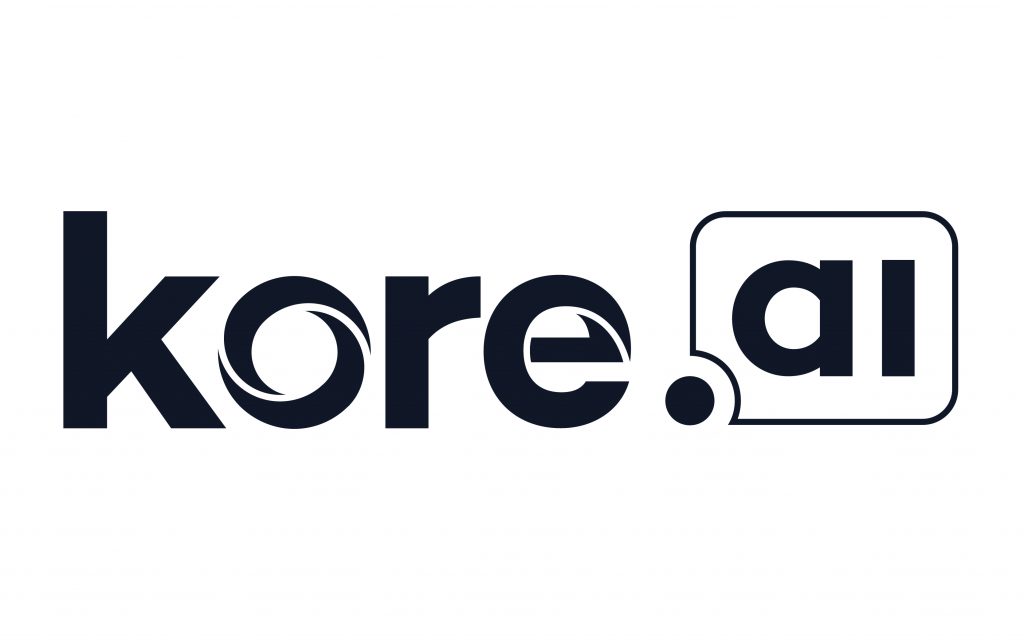
The system offered by Kore.ai is designed to build intelligent virtual assistants (IVAs) capable of managing intricate interactions over a variety of channels.
Because of its strong integration possibilities and wide linguistic compatibility, Kore.ai is appropriate for companies wishing to improve staff and consumer relations using cutting-edge AI technology.
Key Features
- Low-Code/No-Code Choices: Makes it simple to create IVAs with little programming.
- Multilingual Solutions: More than 120 languages are supported, and it interfaces with a wide range of channels.
- Extensive Dialog Management: Uses powerful natural language processing to improve comprehension of natural speech.
- Privacy and Compliance: Adheres to strict security guidelines, which are essential for industries like healthcare and finance.
USE CASES AND INDUSTRIES CASES
1 . Bank
Utilize more than 250 pre-made use cases to boost client satisfaction and offer 24/7 context-specific, human-like interaction.
For instance, a user activates the voice bot and explains their concern regarding the transaction. The voice bot, equipped with a pre-made use case for transaction disputes, quickly identifies the issue based on the user’s input and guides them through the necessary steps to resolve it.
2. Retail
Quickly answers customer queries to reduce cart abandonment rates and boost ROI.
For instance, a fashion retailer uses Kore AI voice bot to recommend items tailored to customer preferences or answer about specific product features during a shopping experience.
3. IBM WatsonX Assistant

IBM WatsonX Assistant is a semantic artificial intelligence system that creates chatbots and speech agents for controlled self-service using big machine learning models of language and an easy-to-use UI.
This means businesses can quickly develop and deploy intelligent self-service solutions that understand and respond to customer queries in a natural, human-like way. It simplifies conventional help procedures and enables businesses to include AI chatbots in their current workplace efficiency and customer support platforms.
The visual toolkit lets customers get started without knowing how to code, and they can further personalize the voice of the AI assistant to fit their company.
Key Features
- Conversational Search with Generative AI: Uses Large Language Models (LLMs) in conversational search to produce precise, conversational responses based on the content of your business.
- Improved Reasoning and User Intent Recognition: Uses a novel transformer-based foundation model to categorize queries with barely any training burden and better understand human speech.
- Autolearning AI technology: AI chatbots use algorithms that constantly acquire information from previous exchanges to provide the best answers to queries and enhance dialogue flow routing.
USE CASES AND INDUSTRIES CASES
1 . Healthcare
Patients find it difficult to do basic tasks like scheduling appointments and discovering test results when they must keep track of several passwords and navigate complex interfaces.
By collecting medical data from multiple platforms and eliminating needless discomfort, the IBM WatsonX healthcare voice bot provides a more user-friendly method of interacting with intricate healthcare structures.
2. Banking
IBM WatsonX Assistant empowers customers to solve their financial concerns individually while having quick access to fundamental banking functions such as locating branches, checking account balances, making payments, transferring funds, and more.
Customers can interact with the AI-powered assistant through voice commands to quickly find the nearest bank branch by obtaining directions. This streamlined process saves time for customers and improves overall convenience in their banking interactions.
4. Dialogflow
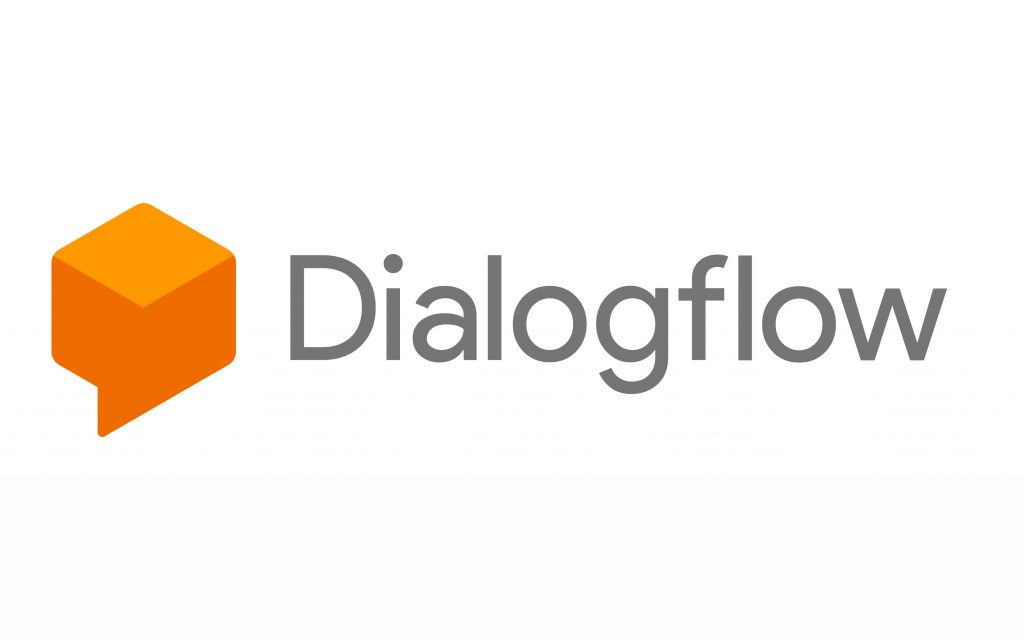
Dialogflow, is one of the best voice bot platforms, making it easier to create user interfaces that employ text and voice. Google took over Dialogflow in 2019 and uses its sophisticated machine learning and NLP skills to provide a strong foundation for creating chatbots that are intuitive and highly engaging.
Key Features
- Google Integration: Improves user experience and functionality by seamlessly integrating with Google Cloud and additional Google offerings.
- Visual Platform: A user-friendly interface for creating interaction and dialog sequences.
- Multi-Lingual Services: Provides natural language comprehension in more than 20 languages, enabling worldwide accessibility.
- Natural Language Knowledge: Makes use of sophisticated NLP to provide precise and contextually relevant answers.
USE CASES AND INDUSTRIES CASES
1. Travel
Offers customer care voice bots that can easily respond to frequently asked client questions thanks to its sophisticated NLP engine and contextual understanding.
Additionally, the multilingual capabilities of Dialogflow voicebot in the travel industry enable it to respond to FAQs in various languages, catering to a diverse customer base.
2. Financial services
Dialogflow voice bot is a valuable tool for the financial service industry as it enables efficient handling of customer queries, guides users through websites or applications, and performs specific tasks such as account inquiries or transaction processing. This helps financial institutions enhance customer engagement and streamline operations.
5. Haptik
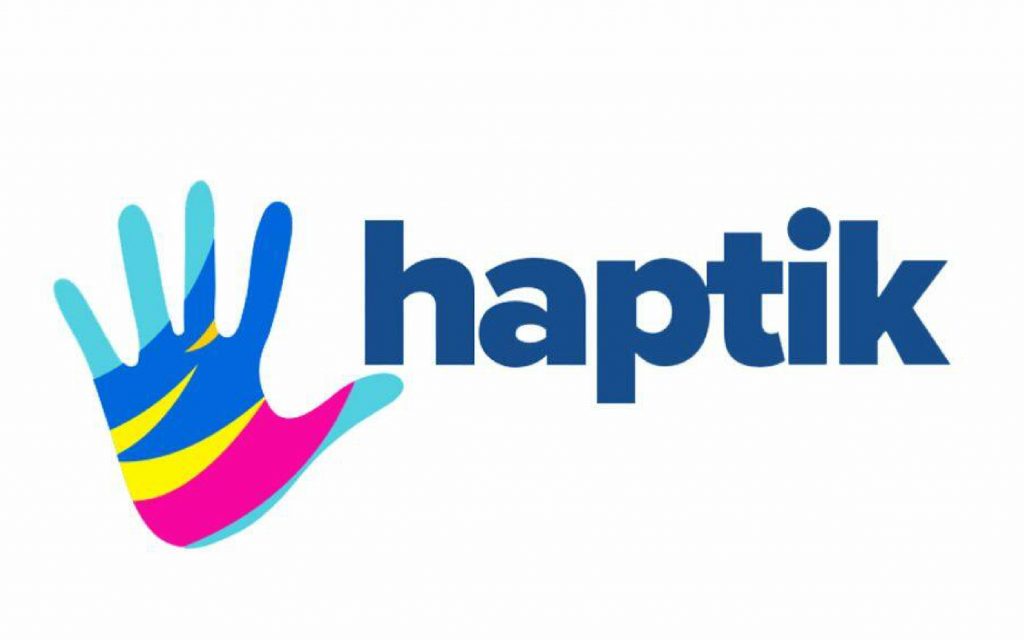
A conversational AI platform called Haptik creates chatbots and virtual assistants specifically for customer support. By combining natural language processing (NLP) with intent recognition methods, it aims to create conversational interactions that are both interesting and flexible.
Key Features
- Easy-to-use Visual Options: Offers an intuitive interface for creating voice bot dialogues without requiring a high level of technical knowledge.
- Ready-made Templates: Provides a collection of templates designed for typical use cases in the marketplace, which expedites the installation procedure.
- NLP and Intent Identification: Intelligent self-service options are made possible by powerful NLP, which is utilized to comprehend and react to extremely precise user inputs.
- Multi-Channel Integration: This feature expands its application by supporting integration with multiple channels, such as websites, voice-controlled devices, and messaging systems.
USE CASES AND INDUSTRIES CASES
1. Banking
Haptik voice bot can assist customers in checking account balances or transferring funds. For example, a customer can say, “Hey, what’s my current account balance?”. The voice bot can securely authenticate the user and provide real-time updates on transactions.
2. Healthcare
Haptik voice bot can help patients schedule appointments. Additionally, it lets healthcare organizations simplify their process of rescheduling appointments so that patients can easily change their time and date.
Best Practices for Choosing and Implementing the Best Voicebot Software for CX
When choosing the best voicebot software, businesses should have specific knowledge about the requirements and budget size of their companies.
Here are the top 3 factors and implementation tips to keep in mind!
1. Establish a Specific Goal
The first step in selecting voice bot software is identifying specific tasks where it can benefit businesses and customers. These include handling frequently asked questions, product suggestions, and basic tasks like setting reminders. This way, they can tailor the voice bot to address key customer needs and improve operational efficiency.
2. Language, Style, and Adaptability Concerns
A voicebot’s ability to adapt to various languages and dialects must be taken into account.
Additionally, the voicebot’s language, tone, and intonation should align with the target audience and the intended application. It should accurately interpret different pronunciations to ensure a smooth customer experience.
Businesses must also account for customer preferences regarding voice frequency and tone—whether formal, informal, or specific regional accents. These nuances significantly impact the overall customer experience, as users are more likely to engage positively with a voice bot that reflects their own communication style and tone.
3. Contextual Understanding
Voice bots need to manage several purposes in a single query. For example, a consumer may inquire about an item’s availability and pricing at the same time. The voicebot needs to be able to handle both questions easily.
When a voice bot is unable to resolve a customer’s issue, it should seamlessly transfer the inquiry to a human representative. For example, if a customer reports a hacked account, they will require the guidance and support of a human agent.
Additionally, the voice bot should be designed with templates that handle sensitive situations with care. Along with offering the option to speak with a human agent, the voice bot can use comforting phrases to help ease the concerns of upset or anxious customers.
The Future of Best Voicebot Software in Customer Experience
We will soon witness the convergence of two innovations, with voice bots organically integrating with robotic process automation to provide more self-service applications. This integration will allow voice bots to not only handle customer interactions but also trigger automated workflows, enabling seamless processing of tasks such as data entry, order fulfillment, and account updates.
In a setting where tech is always evolving, conversational AI has completely transformed customer service. These virtual assistants’ speech capabilities have humanized previously robotic machine-to-machine interactions.
Are you wondering which aspect is the most beneficial? Voice bots are now available and customizable for companies of all sizes, so they are no longer an indulgence for only big organizations. Why not get on board and provide your clients with a smooth, customized experience?
Boost your customer experience by integrating Kapture CX AI-powered voice bots into your communication channels. The Voice Bot from Kapture can comprehend and reply to inquiries in a variety of languages, boosting your brand reach.
Book a demo call today to learn more about our suite of AI-powered CX solutions.
FAQs
A voicebot is an AI-powered virtual assistant that uses speech recognition technology to interact with users through voice commands, providing personalized and efficient customer service.
Voice bots can help organizations in various industries by boosting customer happiness, decreasing response times, increasing efficiency, customizing interactions, and improving customer service.
Features like natural language comprehension, multichannel support, integration capabilities, analytics for insights, and scalability for future expansion should all be taken into account when choosing the best voicebot software for customer experience.
Some of the most common challenges are ensuring data privacy and training AI to understand diverse accents and languages. Additionally, businesses must address integration with existing systems and manage the balance between automation and the need for human intervention in more complex cases.
Some of the best voicebot software for customer experience in 2025 include Kapture CX, Dialogflow, IBM Watson Assistant, Amazon Lex, and Google Cloud Speech-to-Text, each offering unique features and capabilities to enhance customer interactions.
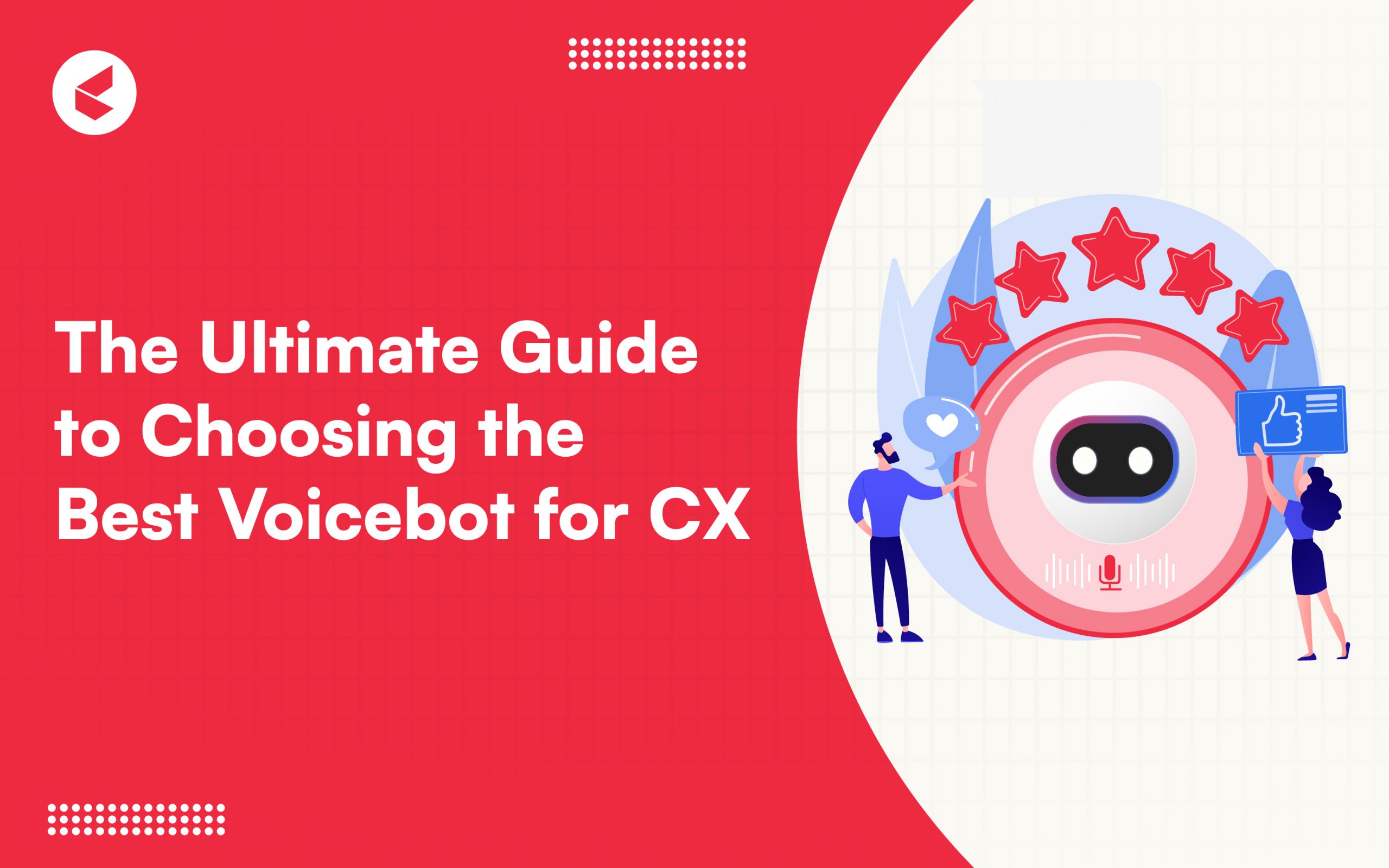
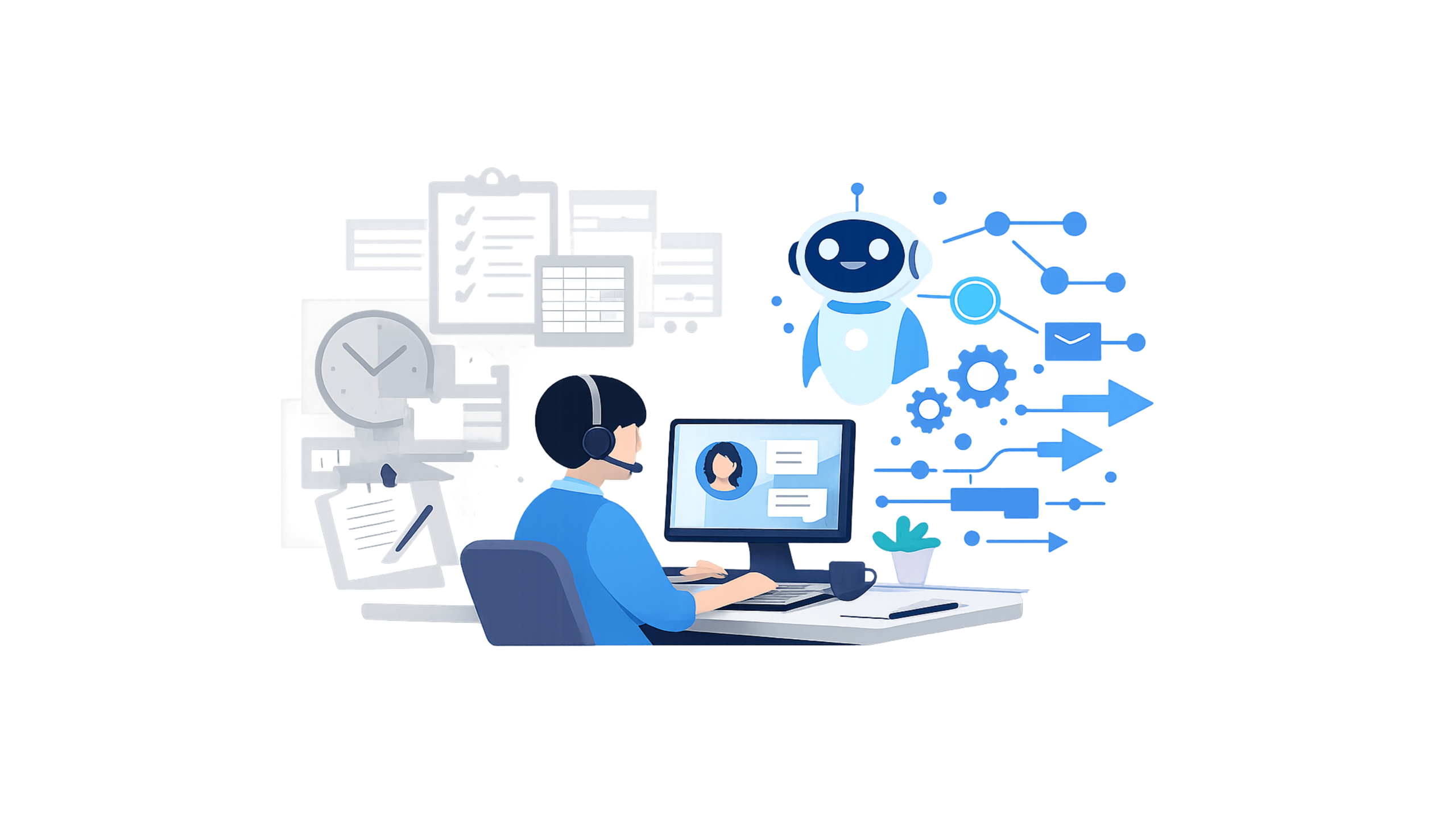
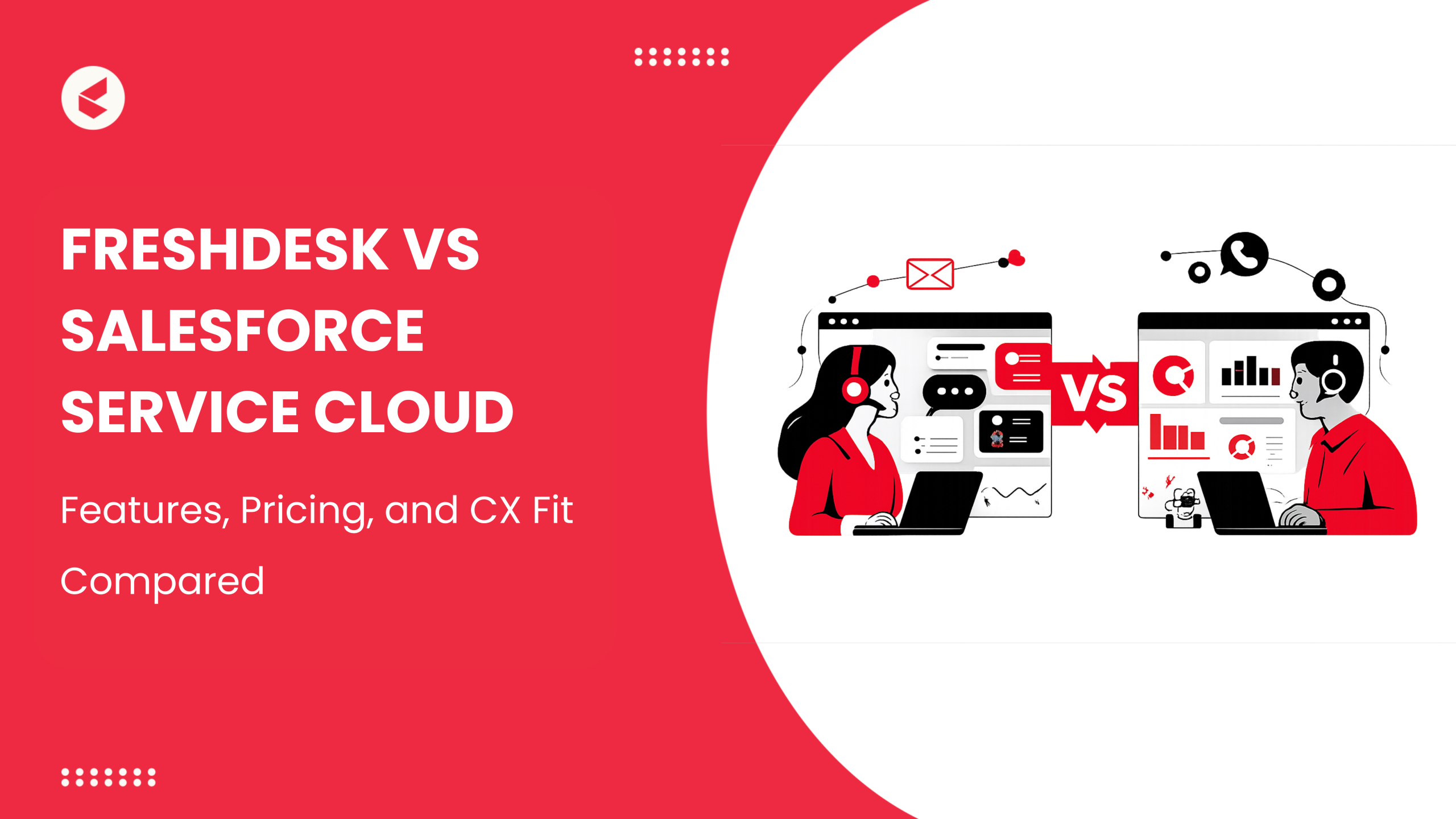
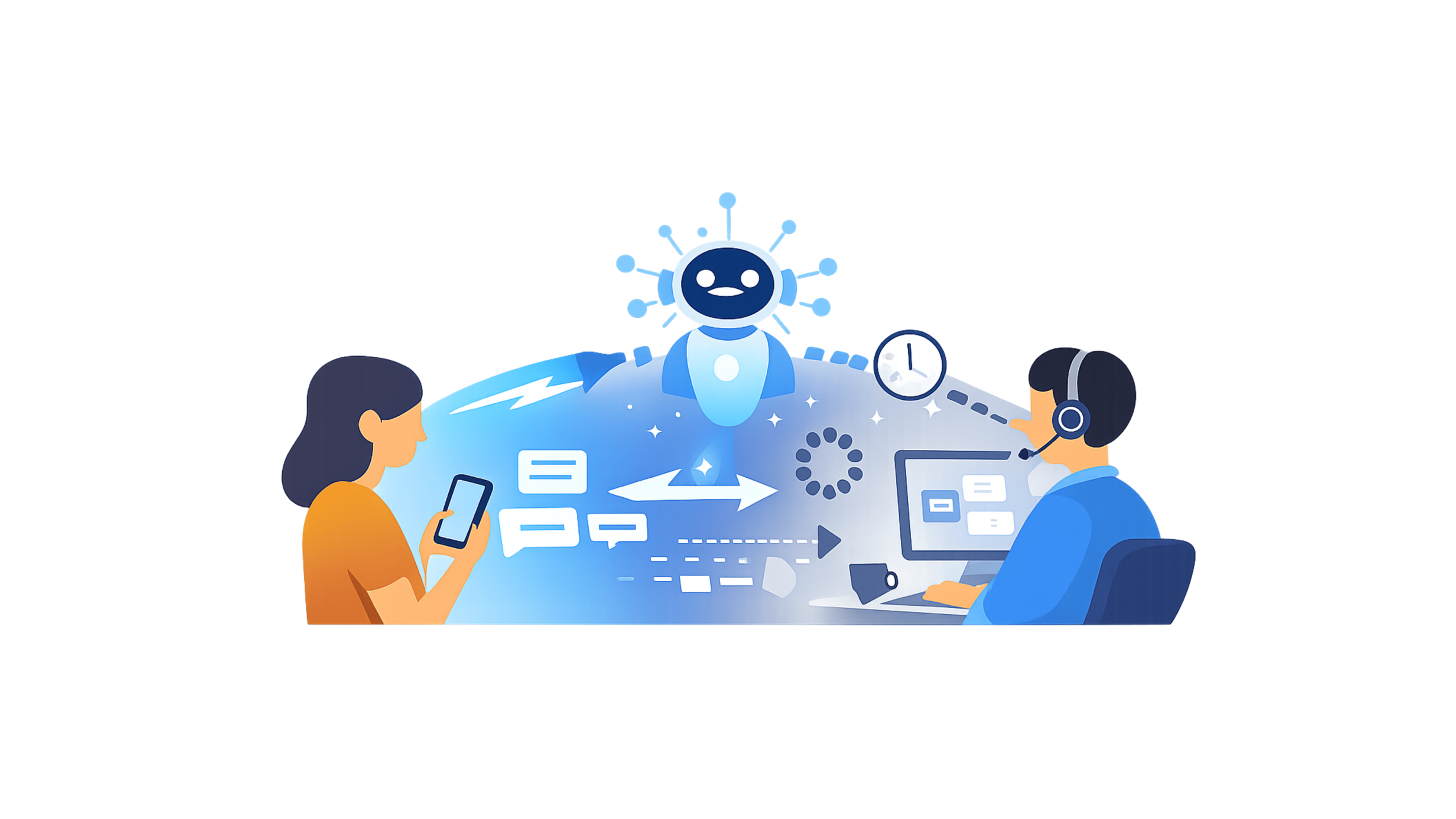
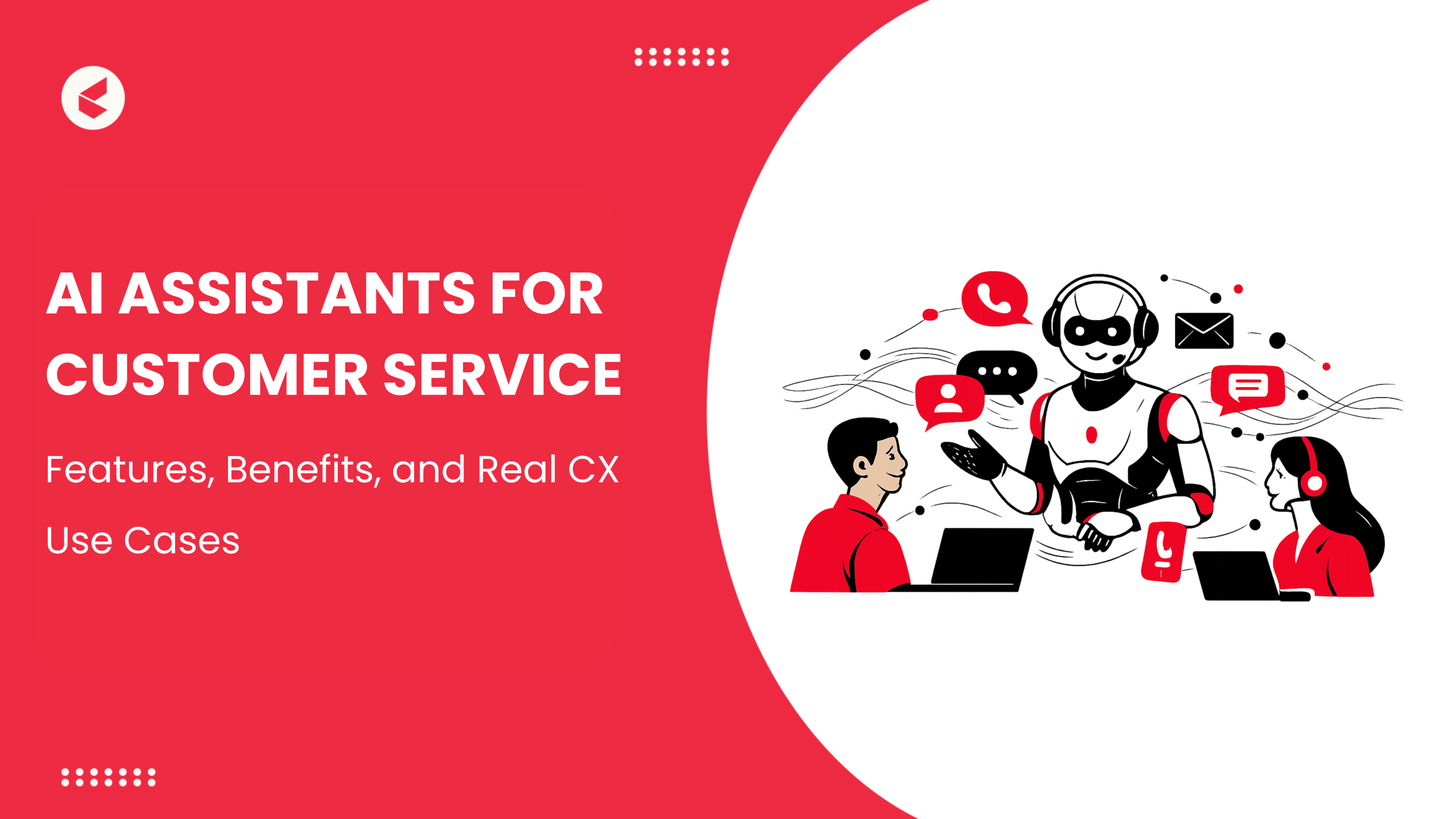









One thought on “Voicebot for CX: The Ultimate Guide to 2025’s Best Platforms”
Comments are closed.